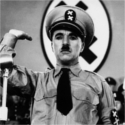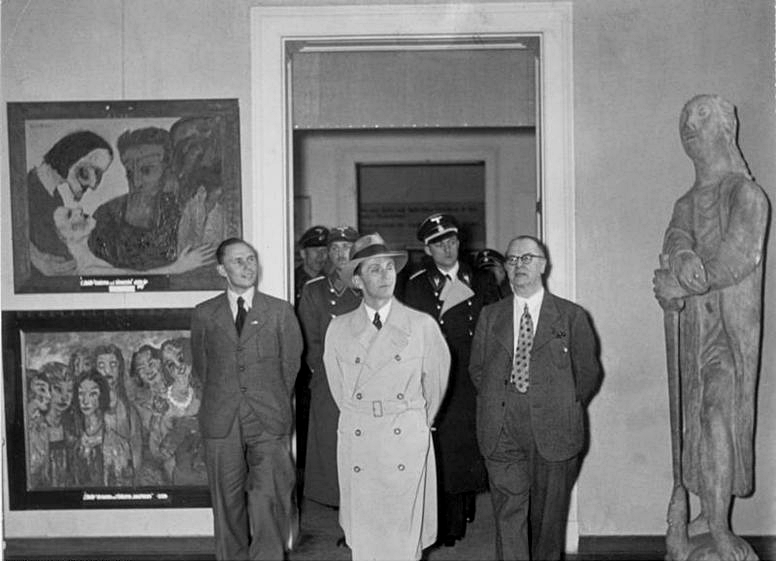We need to ensure we’re not integrating fash terminology into our worldview. Words that can have a general meaning can have an underlying meaning when used in specifics contexts. This has to do with fascist concepts of “revealing” of truth.
Just gonna copy the article here, for educational purposes:
Degenerate art (German: Entartete Kunst) was a term adopted in the 1920s by the Nazi Party in Germany to describe modern art. During the dictatorship of Adolf Hitler, German modernist art, including many works of internationally renowned artists, was removed from state-owned museums and banned in Nazi Germany on the grounds that such art was an “insult to German feeling”, un-German, Freemasonic, Jewish, or Communist in nature. Those identified as degenerate artists were subjected to sanctions that included being dismissed from teaching positions, being forbidden to exhibit or to sell their art, and in some cases being forbidden to produce art.
Degenerate Art also was the title of an exhibition, held by the Nazis in Munich in 1937, consisting of 650 modernist artworks chaotically hung and accompanied by text labels deriding the art. Designed to inflame public opinion against modernism, the exhibition subsequently traveled to several other cities in Germany and Austria.
While modern styles of art were prohibited, the Nazis promoted paintings and sculptures that were traditional in manner and that exalted the “blood and soil” values of racial purity, militarism, and obedience. Similar restrictions were placed upon music, which was expected to be tonal and free of any jazz influences; disapproved music was termed degenerate music. Films and plays were also censored.[1]
The term Entartung (or “degeneracy”) had gained currency in Germany by the late 19th century when the critic and author Max Nordau devised the theory presented in his 1892 book Entartung.[2] Nordau drew upon the writings of the criminologist Cesare Lombroso, whose The Criminal Man, published in 1876, attempted to prove that there were “born criminals” whose atavistic personality traits could be detected by scientifically measuring abnormal physical characteristics. Nordau developed from this premise a critique of modern art, explained as the work of those so corrupted and enfeebled by modern life that they have lost the self-control needed to produce coherent works. He attacked Aestheticism in English literature and described the mysticism of the Symbolist movement in French literature as a product of mental pathology. Explaining the painterliness of Impressionism as the sign of a diseased visual cortex, he decried modern degeneracy while praising traditional German culture. Despite the fact that Nordau was Jewish and a key figure in the Zionist movement (Lombroso was also Jewish), his theory of artistic degeneracy would be seized upon by German Nazis during the Weimar Republic as a rallying point for their antisemitic and racist demand for Aryan purity in art.
Belief in a Germanic spirit—defined as mystical, rural, moral, bearing ancient wisdom, and noble in the face of a tragic destiny—existed long before the rise of the Nazis; the composer Richard Wagner celebrated such ideas in his writings.[3][4] Beginning before World War I, the well-known German architect and painter Paul Schultze-Naumburg’s influential writings, which invoked racial theories in condemning modern art and architecture, supplied much of the basis for Adolf Hitler’s belief that classical Greece and the Middle Ages were the true sources of Aryan art.[5] Schultze-Naumburg subsequently wrote such books as Die Kunst der Deutschen. Ihr Wesen und ihre Werke (The art of the Germans. Its nature and its works) and Kunst und Rasse (Art and Race), the latter published in 1928, in which he argued that only racially pure artists could produce a healthy art which upheld timeless ideals of classical beauty, while racially mixed modern artists produced disordered artworks and monstrous depictions of the human form. By reproducing examples of modern art next to photographs of people with deformities and diseases, he graphically reinforced the idea of modernism as a sickness.[6] Alfred Rosenberg developed this theory in Der Mythos des 20. Jahrhunderts (Myth of the Twentieth Century), published in 1933, which became a best-seller in Germany and made Rosenberg the Party’s leading ideological spokesman.[7]
Cultural Bolshevism (German: Kulturbolschewismus), sometimes referred to specifically as art Bolshevism, music Bolshevism or sexual Bolshevism,[17] was a term widely used by state-sponsored critics in Nazi Germany to denounce secularist, modernist and progressive cultural movements.
The modernist break occurred around the same time as the October Revolution of 1917 in Russia, and those who felt threatened by the new artistic viewpoint associated it with the group that came to power after that revolution, the Bolsheviks with their Marxist–Leninist political philosophy. In reality, the connection between the modernism and Bolshevism was extremely tenuous, and primarily a matter of both existing at the same unsettled time in European history. Still, some artists in Western Europe drew inspiration from revolutionary ideals, to the extent that Dadaist Richard Huelsenbeck confidently declared in 1920 that Dada was a “German Bolshevist affair”.[18]
The association of new art with Bolshevism circulated in right-wing and nationalist discourse in the following years, being the subject of a chapter in Adolf Hitler’s Mein Kampf. Amid Hitler’s rise to power, the Nazis denounced a number of contemporary styles as “cultural Bolshevism,” notably abstract art and Bauhaus architecture. German artists such as Max Ernst and Max Beckmann were similarly denounced as “cultural Bolsheviks”.[19][20][21]



Thank you. ppl should really eliminate that from their vocabulary. Not sure how some leftists got to be okay with it in the first place.